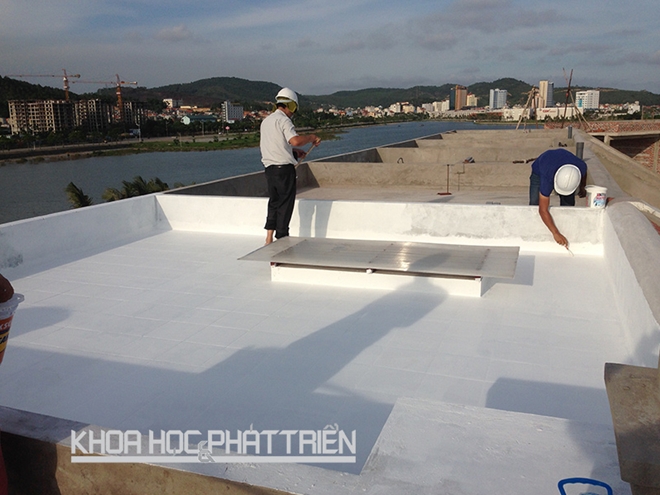Vietnamese scientist uses nano particles to make heat-reflective paint
High durability is also a typical feature of the paint product using nano particles invented by Dr Nguyen Thien Vuong from the Institute of Tropical Technique, an arm of the Vietnam Science & Technology Academy.
Vietnam has an average heat radiation volume of 120 kcal per square centimeter per annum. According to Vuong, the intensity of direct radiation reaches its maximum level in June and August in the north, and in April, May, August and September in the south.
 |
| The solar heat reflectivity of a new paint invented by a local scientist is up to 90 percent, while the concrete surface temperature reduction could be up to 8-9oC. |
Therefore, saving energy, cooling, and reducing the heat island effect is always a concern in the civil engineering industry.
Previously, the Institute of Tropical Technique successfully fabricated a solar heat reflective paint, but the product caused environmental pollution because of the use of organic solvent. The weather durability was not high, only about 5-6 years.
The solar heat reflective paint products available in the market have two layers – the primer and solar heat reflective coating with reflectivity in the infrared range of 60-80 percent.
The longevity and reflectivity to the sun's heat can be greatly reduced as a result of the direct effects of the weather.
Understanding the problems, Vuong and his co-workers from the Vietnam Science & Technology Academy decided to utilize nano particles to make a heatproof liquid coating, solar-heat reflective and weather durable.
They have successfully invented a generation of paints friendly to the environment with solar heat reflectivity of up to 90 percent witj high weather durability.
The paint consists of three layers: alkali-resistant primer, sun-reflective coating and UV-coated nano-coating.
According to Vuong, the reduction of concrete surface temperature by 8-9oC has a very important significance in easing the heat island effect in urban areas, thus helping reduce energy consumption to cool the environments inside buildings.
Due to the urban heat island effect, in the afternoon and evening, the temperature in urban areas is always 2-5oC higher than rural areas, thus creating hot climate zones.
Nguyen Thi Bich Thuy from the Transport Technology University confirmed that the successful application of nano particles has created a generation of paints with high heat resistance capability.
Thuy said the paint not only can help resist heat for buildings, but it can be applied to petroleum tanks. As the tanks are put outdoors and influenced by weather conditions, petrol products are lost during evaporation.
“The nanoparticle coating can shield things from ultraviolet light and therefore, it can provide better protection than currently used paints," she said.

